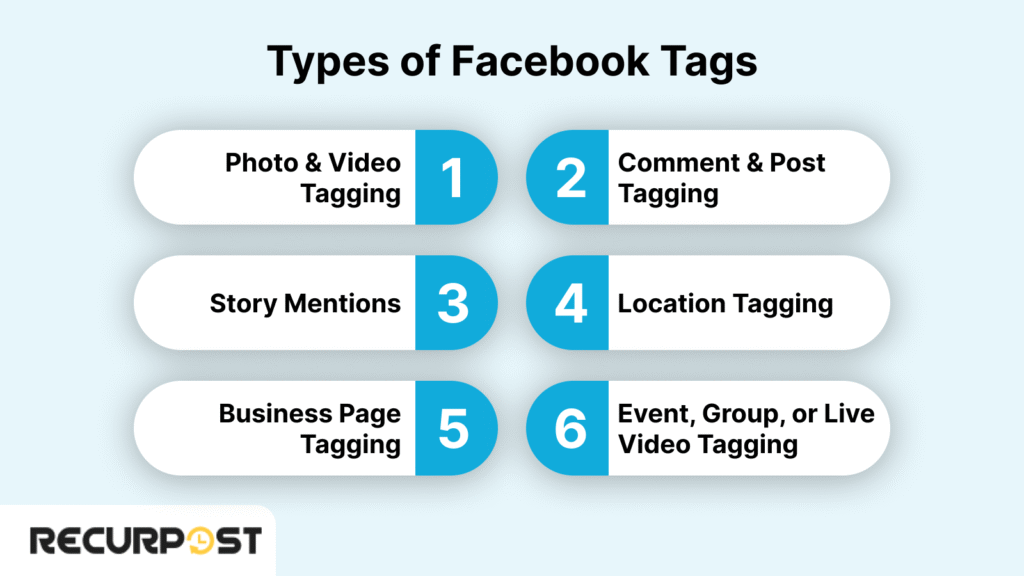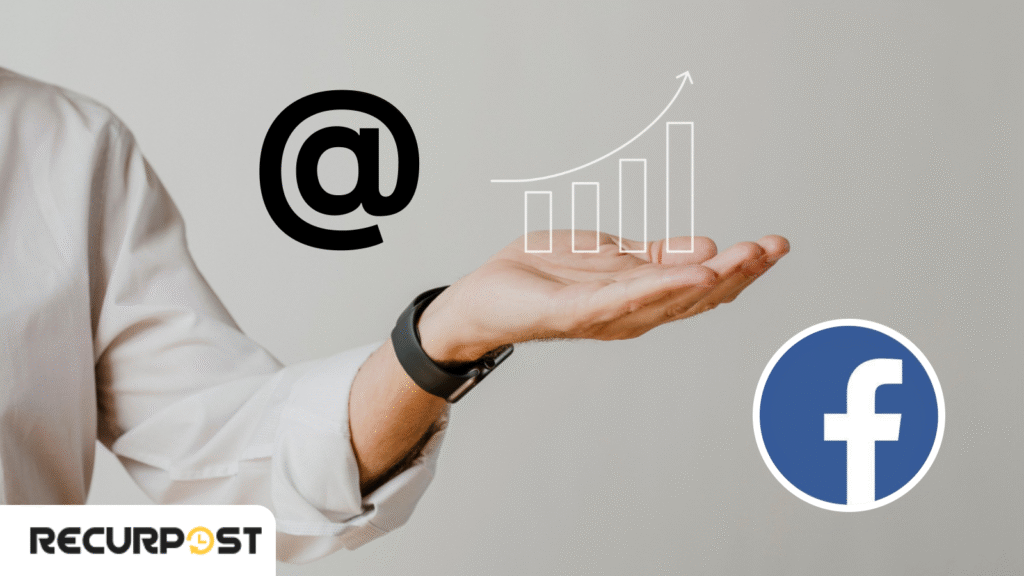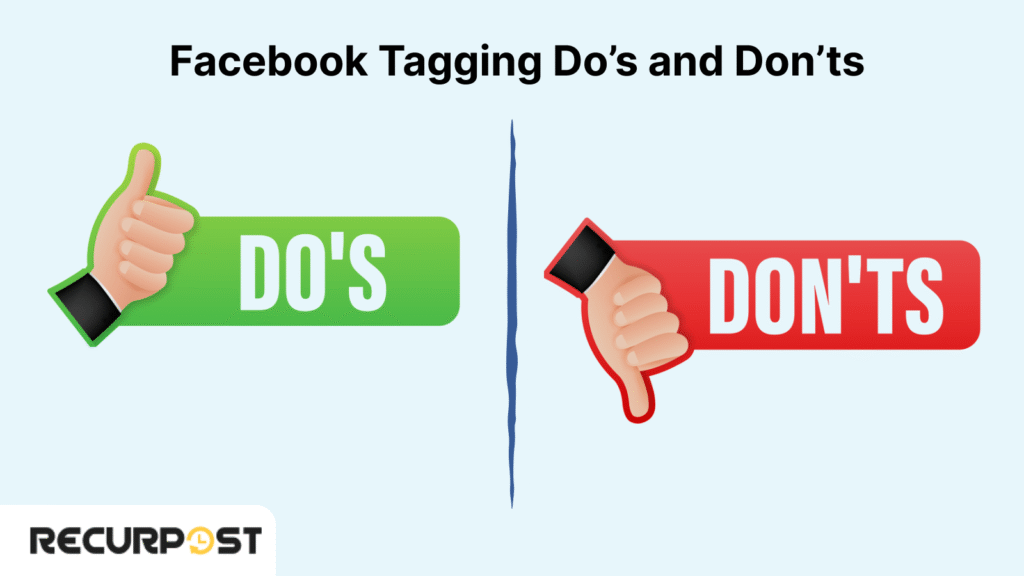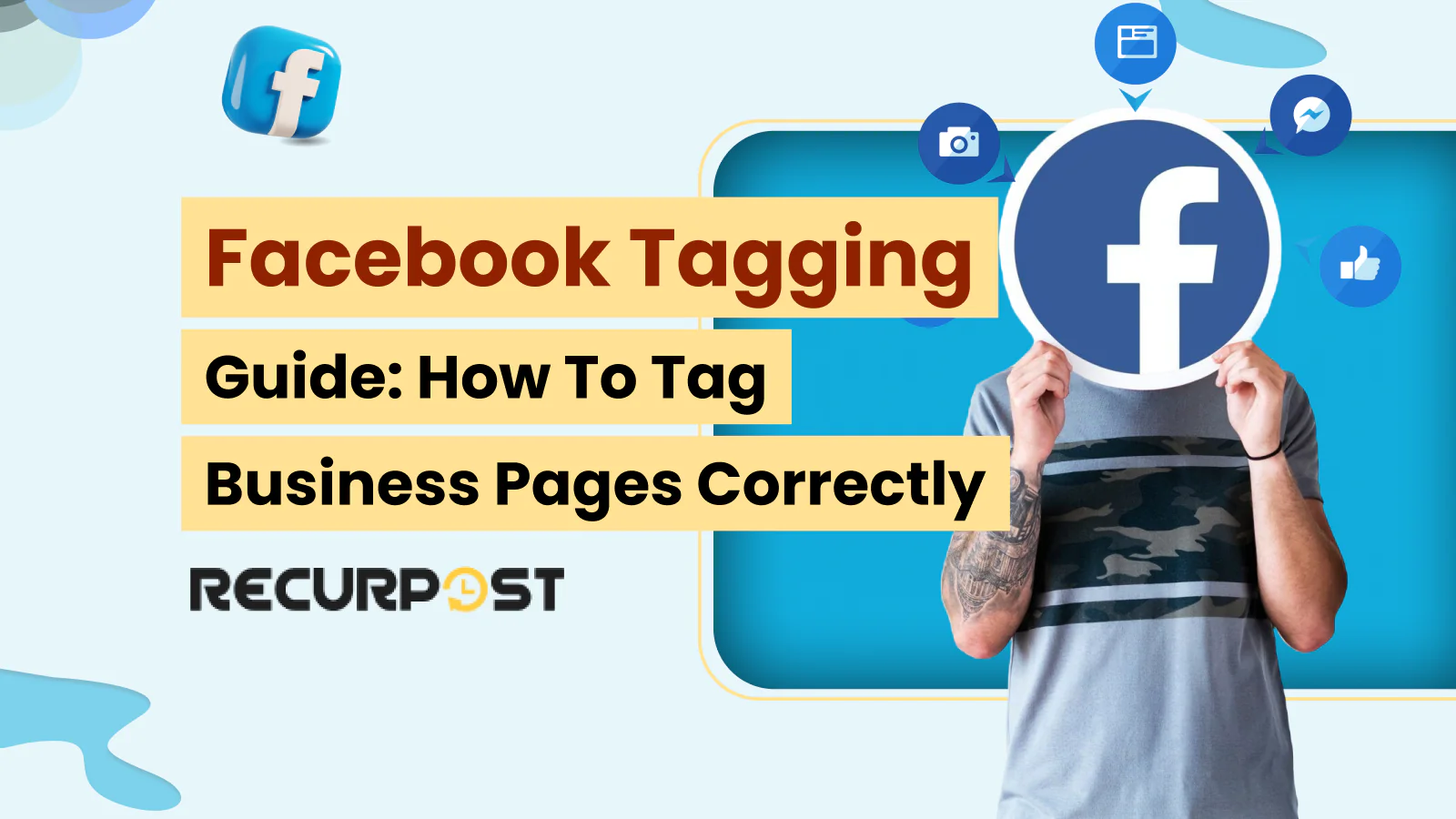Want to level up your Facebook tagging skills?
Tagging is more than just typing “@someone.” It connects posts with people, brands, and business pages, boosting visibility and organic reach. Done right, tagging strengthens relationships, creates clickable links, and attracts more followers to your profile or page.
This guide shows how to tag Facebook pages on personal accounts, business profiles, and groups without spamming. You’ll see examples of tagging in photos, posts, and comments, along with steps for page mentions and reviews.
Here’s what you’ll learn:
- What Facebook tagging means and how it differs from a simple mention
- Where tagging works best: photos, comments, business pages, and groups
- How correct tagging drives traffic, new followers, and visibility for local businesses
- How to review tags, adjust privacy settings, and manage tagged posts on your page
By the end, you’ll know how to tag people and businesses in photos, stories, and comments in ways that boost reach without frustrating your audience.
Find Out How to Tag Everyone in a Facebook Group
Why Facebook Tagging is Important?
Facebook tagging connects people, business pages, and posts in a way that boosts visibility. A tag creates a clickable link to a profile or page, notifies the tagged user, and makes the post visible to their network. This extra reach can bring new followers and more engagement.
Tagging vs. Mentioning
Tagging attaches a person or page to your post, showing in details like photos or captions. Mentioning, on the other hand, simply creates a link with “@” but doesn’t connect them as directly.
Alternate Terms You Might Hear
People may also say “tag a photo,” “profile tagging,” or “business tagging.” Each one points to the same action, linking people or business pages on Facebook.
Where Tagging Happens on Facebook
Common spots for Facebook tagging include:
- Posts: Tag a business page in a status update to give credit or draw attention.
- Comments: Add a tag when replying to bring someone into the thread.
- Photos: Mark people or pages in images to show who’s featured.
- Stories: Mention others in short-lived updates.
- Check-ins: Tag locations or local businesses to share where you are.
Both personal and business accounts support tagging, though privacy settings may limit who can tag or be tagged. This keeps tagging relevant and avoids spam.
How Do I Publish a Page on Facebook
How to Tag a Business Page on Facebook?

Facebook tagging works differently depending on the content. Tags connect posts, photos, and comments with business pages, groups, or people, and results vary depending on privacy settings and platform updates.
Photo & Video Tagging
Best for: product showcases, team introductions
Example: Add tags to team members in a group photo. Tag your business page on a product video. These steps boost visibility and help new followers find your page.
Comment & Post Tagging
Best for: conversations, community replies
Example: Tag customers, followers, or other business pages in comments. Use posts to highlight testimonials or content tagging examples. Always review tags after posting so you can remove any irrelevant mentions.
Story Mentions
Best for: influencer collaborations, quick updates
Example: Mention an influencer in a story for a 2025 campaign. Tag a business page during an event to capture real-time attention.
Location Tagging
Best for: events, local promotions
Example: Add a location when hosting an event or visiting a company. Local users can see tagged posts when browsing nearby.
Business Page Tagging
Best for: partnerships, cross-promotions
Example: Tag a partner business page during a launch. This builds visibility, encourages brand mentions, and strengthens connections between companies.
Event, Group, or Live Video Tagging
Best for: networking and engagement
Example: Tag attendees in a Facebook Live or group post. Businesses can boost community reach this way, then check settings to remove spam tags if needed.
Facebook Tagging Features & Controls
Facebook tagging is simple, but knowing the right settings helps. Tagging tools let you manage tag visibility, review tags before they show, and decide who can tag your personal account or business page.
How to Tag a Business on Facebook
1. Posts or Status Updates
Use the “@” symbol to tag a business page in a post. This creates a clickable link and appears in page mentions.
- Type “@” and enter the business name.
- Select the right option.
- Tap and post. The tag links directly to the page.
2. Photos or Videos
Add tags to a photo or video to link people or pages.
- Upload your media.
- Select “Tag people.”
- Tap the spot you want to tag.
- Search and tag the right person or business page.
3. Stories
Tag in a story using the “@mention” sticker or typing “@”.
- Add your content.
- Use the sticker or type a name.
- Select the correct profile or page.
4. Comments
Tag a company or business page in comments with “@”.
- Enter the name and pick from the dropdown.
- The comment links directly to the page.
- You can later review tags or remove them in privacy settings.
Tag Suggestions (Auto-Suggest)
Facebook tagging suggests names with facial recognition or based on recent activity. You can turn off auto-suggest in settings and tag people or business pages manually.
Tag Notifications and Approvals
When you tag people or a business page, they get a notification. Some accounts use tag review, meaning the tag won’t show until they approve it.
Privacy Settings & Tag Visibility
Adjust your privacy settings to decide:
- Who can tag you
- Who can see tagged posts
- Whether tagged content shows on your timeline
This keeps your profile organized and blocks spam tagging.
Removing or Reviewing Tags
This keeps your profile organized and blocks spam tagging.
For review tags:
- Go to your profile
- Open “Timeline and Tagging” settings
- Turn on tag review to approve tags before they appear
Tag Limits
Facebook tagging allows up to 50 tags per post. This limit includes people, business pages, and other accounts. Tags beyond the limit won’t appear.
How to use Facebook Groups to Grow your Business
Facebook Tagging for Marketing Growth

Facebook tagging links content with people and business pages, boosting reach. Business accounts grow by showing tagged posts to wider audiences. Since Facebook remains strong for B2B and B2C, tagging delivers the benefits of tagging on social media without relying only on ads.
Expand Reach Without Ads
Tagging creates clickable links and notifies people or pages. Their followers may see the tagged post, expanding reach organically. Some tools even let you automatically tag posts and pages for easier visibility.
Connect with Local Businesses and Other Pages
Tagging local businesses or partner pages builds lasting connections. A business tag exposes your content to audiences already interested. Example: Tag another business page when hosting a joint event.
Encourage Community Interaction
Tagging customers or groups helps maintain conversations. Try content tagging examples in comments, posts, and photos to involve users. This strengthens engagement and grows communities.
Turn Followers into Promoters
Ask followers to tag your business page in product posts. These organic tags work like reviews and attract potential buyers. Peer feedback is powerful, echoing the advantages of tagging Facebook bageltechnews reference.
Use Tagging Settings Wisely
Adjust your privacy settings to manage who can tag your page. Enable Facebook tagging approval so tagged posts require confirmation before going public. This keeps your page relevant and safe from spam.
How to Increase Facebook Followers
Facebook Tagging Do’s and Don’ts

Done right, Facebook tagging builds trust. Misused tags frustrate users and damage your business page. Here’s how to tag responsibly and avoid issues like Facebook tagging not working or spammy mentions.
Tag Relevant People and Pages
Only tag people, business pages, or groups directly linked to the content. Example: In a group photo, tag the people in the image, not random followers.
Use Tags for Credit or Collaboration
Tag other business pages in joint offers or industry posts. This business tag directs people to partners and improves visibility.
Turn On Tag Review
Use tagging settings to control what appears on your page. Enable review tags to approve content before it shows on your profile or business page. This prevents spam and works with Facebook tagging approval.
Don’t Tag Just for Reach
Avoid tagging unrelated people or pages. Random tags look spammy and lower trust. If they appear, use Facebook to remove a tag to clear them.
Avoid Over-Tagging
Each post has a Facebook tag limit of 50 per post. Don’t max out the limit—too many tags clutter the message and discourage interaction.
Keep Context Clear
Tags should always fit the content. If you tag someone in a photo, they should be in it. If you tag a business page, it must connect to the post or comment subject.
How to Create a Social Media Marketing Strategy
Measure Facebook Tagging Performance
Tracking results matters. Measuring how Facebook tagging affects reach, traffic, and engagement shows whether tags truly support growth.
Key Metrics to Watch
On your business page, monitor these metrics:
- Engagement rate: Likes, comments, and shares on tagged posts (does tagging increase engagement)
- Reach: How many people saw tagged posts or business pages
- Click-throughs: Taps on tagged links, Facebook page tags, or business names
- Followers gained: New followers from business tagging or photo tags
Use Facebook Insights
From your business page, open Facebook Insights. It shows how tags affect visibility. You can:
- Track posts with a photo or company mention
- Compare tag-heavy vs. minimal tagging
- See traffic sources like tagging on the Facebook business page and whether they drive profile visits
Try RecurPost
Tools like RecurPost help schedule posts and measure tagging. Compare tagging local businesses, tagging in groups, or tagging individuals. This also shows if content tagging and approval improve reach.
A/B Test Tagging
Run two similar posts, one with tags, one without. Measure which performs better. This identifies whether tags for products on Facebook, partnerships, or events generate more engagement.
Conclusion
Facebook tagging works as a growth tool, helping your business page reach more people. Purposeful tagging builds visibility, attracts traffic, and connects your content with potential customers.
Quality matters more than quantity. Tag relevant people and business pages, connect with partners, and use tagging to create trust. Adjust your tagging settings, turn on tagging Facebook approval, and track which posts perform best.
Start tagging on Facebook posts that count, whether it’s a profile update, a local event status, or a product photo. If a tag isn’t right, use Facebook to remove a tag. Done well, tagging on a Facebook business page expands reach and makes every Facebook tag page meaningful.
FAQs on Facebook Tagging
1. Can I tag a Facebook business page using my personal account?
Yes. You can tag a Facebook business page from your personal account by typing “@” and the page name. If tagging doesn’t work, check the page settings, since some business pages block tagging from others.
2. Why can’t I tag a person or page on Facebook?
Facebook tagging not working usually comes from privacy settings or restrictions. Some people turn off tagging, and some business pages block tags. If you can’t tag a business page on Facebook, it may require more activity or likes before tagging works.
3. Do tagged posts show up in Facebook search?
Yes, if the post is public and the tagged person or page allows it. Tagged posts may appear in Facebook search tags, improving discoverability for business pages.
4. How do I stop others from tagging my business page?
Go to your business page settings and check the tagging on the Facebook business page section. There, you can limit or turn off tagging. You can also enable Facebook tagging approval to review tags before they appear.
5. Can tagging improve SEO or visibility outside Facebook?
Indirectly, yes. While Facebook tags don’t directly affect Google rankings, tagged posts that are widely shared can bring traffic and backlinks, which boost visibility outside Facebook.

Ruchi Dhimar is a skilled content writer with 5 years of experience. She is passionate about crafting compelling narratives, specializing in writing content for different industries.





